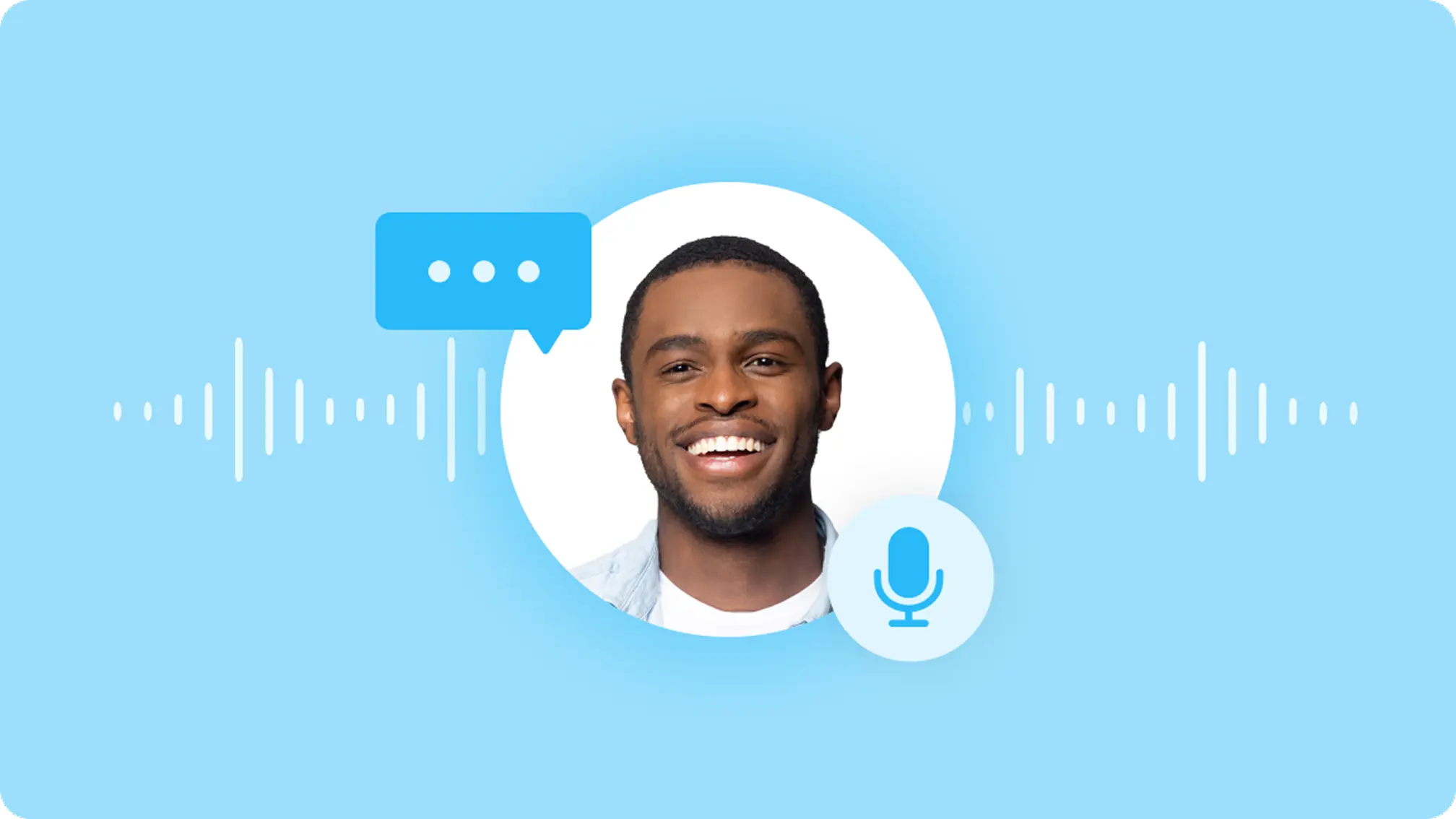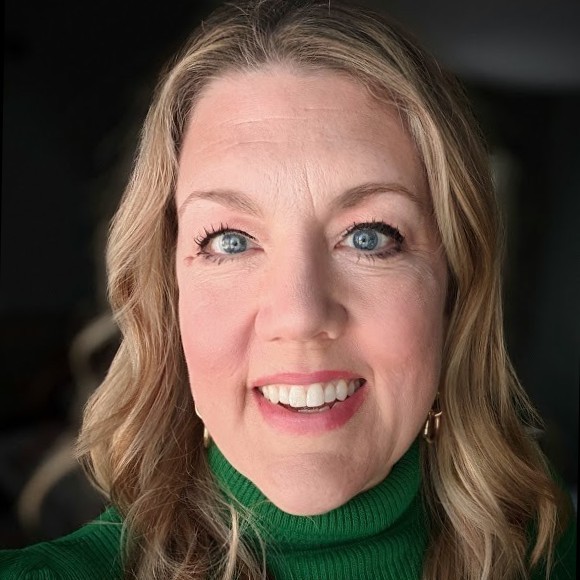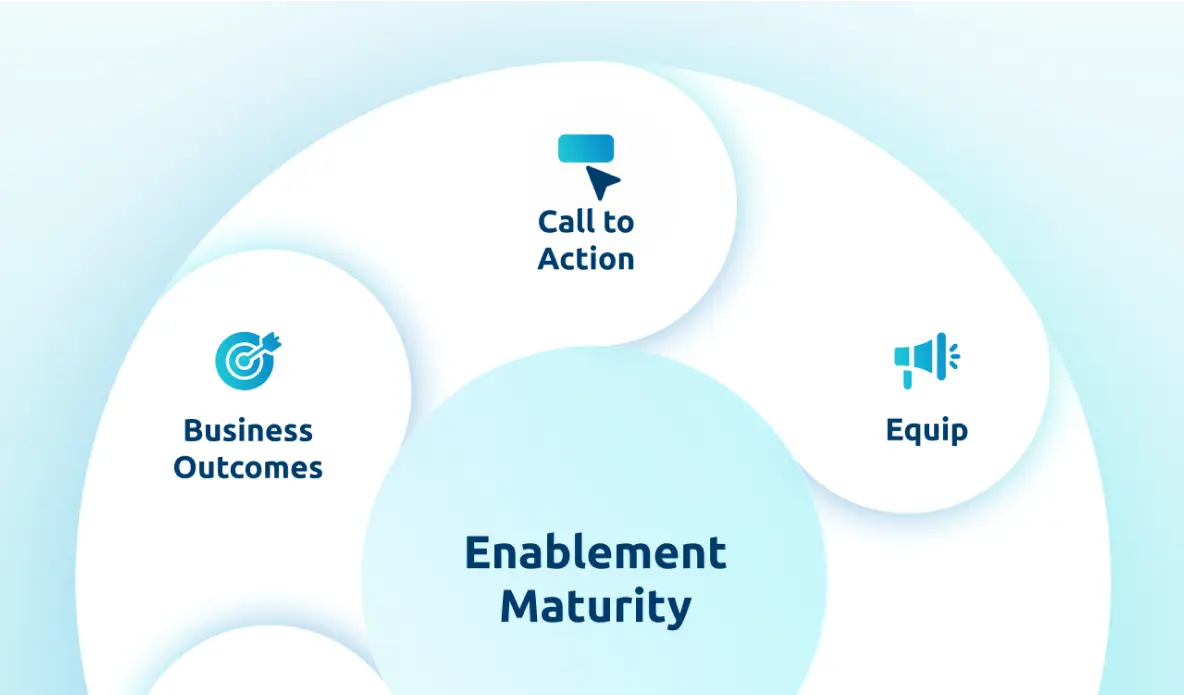Research from Highspot found that more than half of CROs report a 5X return on investment from their sales enablement platform. So, how can an enablement platform be used effectively to elevate your strategy?
Shawnna Sumaoang: Hi and welcome to the Win Win Podcast. I’m your host, Shawnna Sumaoang. Join us as we dive into changing trends in the workplace and how to navigate them successfully. Here to discuss this topic is Julie Wolfe, the director of global revenue enablement at Glassdoor. Thanks for joining, Julie! I’d love for you to tell us about yourself, your background, and your role.
Julie Wolfe: Thank you so much, Shawnna. I’m thrilled to be here with you today. As you mentioned, I direct the enablement team at Glassdoor. I have been at Glassdoor for just about two years now, and I have an amazing team. We call ourselves Revenue Enablement because we are the engine that helps the go-to-market organization drive speed to revenue. We really are focusing on not just our sales partners, but our customer success partners, our business development reps, and all of our go-to-market organization.
SS: I love that. I’d like to start with just some context setting. From your perspective, what does good enablement look like? Maybe if I reframe that or say that slightly differently, what are the key components of an effective enablement strategy at Glassdoor?
JW: Shawnna, enablement is about three things to me, and those three things are helping your reps understand your products, your processes, and your systems and doing so in a way that is entertaining and that helps them learn. Ultimately our end goal is driving speed to revenue that helps them do that faster. To me, those are the three things we focus on in terms of enablement. We also talk about simplifying for our users and our sales team. Our customer success team are our users and we want it to be the most easy-to-use experience for them possible.
SS: I love that. To the latter two points on the systems and processes front, what role does an enablement platform play in helping you bring your enablement strategy to life?
JW: I love that question. It plays a giant role. To me, the enablement platform is our single source of truth. I’ll probably say that again during the course of our conversation. If it’s in Highspot, that’s the single source of truth. That is the correct place.
Process Change, for example, we rolled out a giant compensation plan change for this Q3 that we are in and did a whole page in Highspot around everything that you would need to know. What we found is that when we communicate with various documents, it’s easy for things to get lost, but if we put it in Highspot, this is the single source of truth. This is your answer. Go there.
SS: I love that. What were some of the challenges that you were maybe facing that Highspot has helped to solve and how does it go about solving some of those challenges?
JW: One of the best things about working at Glassdoor, and Glassdoor is an amazing company, is that we truly have a knowledge-sharing culture. At Glassdoor, people are very willing to share what they know about a product, a process, and a system. We have robust Slack channels, and what sometimes happens when you have a knowledge-sharing culture is people share knowledge that hasn’t been approved by legal and hasn’t been approved by marketing, which, you know, it’s great when someone asks does anyone has a case study about something that can help me close this deal? Like, that’s exactly what you want your teams to be doing, to support each other. At the same time, marketing and legal exist for a reason, and so we want to make sure that we are being good stewards and good citizens as Glassdorians.
Highspot, for us, solves some of those challenges. When I see someone in Slack sharing things, I say, Hey, here’s the Highspot page. Go here for this product update. Hey, here’s the Highspot page, go here to learn how to do this new process in Salesforce, for example. We’re really pushing people back to the source in Highspot to know that that is the one that’s been approved by marketing, approved by legal, and is the right document to be sharing.
SS: Another thing that I really loved about your LinkedIn profile, you actually mentioned that the focus of the enablement team at Glassdoor is to simplify and deliver. Tell us more about this mantra and how you infuse it into your enablement strategy.
JW: One of the things we know is that people can only retain so much information. The ‘simplifying’ is taking lots of dense content and boiling it down to the nuggets that people really need. If I tell you, Shawnna, these are the two things we’re going to talk about today, that’s much easier to follow than sending you a 15-page document and saying, could you pre-read this and like share your thoughts with me?
We all work asynchronously a lot now, but what our goal is in simplifying is to take complex information that comes across the organization and really condense it down for our sales and CSS teams so that they know exactly what they need to do and it’s maybe one or two steps. That’s the simplification. Also simplifies their user experience. We have done a lot in Highspot to make it more user-friendly, and to make it more clear where you go for what. We’ve done a lot to tag our content so that when you’re searching, you are finding the right content. Again, that’s simplifying that user experience.
For ‘deliver’, there’s an old phrase, a good enough something is better than a perfect nothing. We want to be able to deliver things to our reps that are good. We’d love them to all be perfect, but we’d rather them be good enough and help them get where they are, or where they need to go as quickly as possible. Ultimately, delivery for us is helping our teams. We use a hashtag at Glassdoor a lot, #oneteam. As one team, our goal is to help speed up revenue. I’ve said it before, and I’ll probably say it again, that’s why if it’s revenue-driving, that is part of what we have to support. That’s the delivery. Simplify the user experience, simplify the content, simplify the asks, and then help our teams deliver.
SS: How do you go about leveraging Highspot? I know you already gave some great examples of how you’re tapping Highspot to help simplify things. How do you leverage Highspot to simplify and deliver initiatives?
JW: I love that question, Shawnna. We did an audit of our Highspot content about 18 months ago, and we did a giant archive of things that were outdated. We looked and started improving governance because we had not really had a lot of governance around the content that went into Highspot. We’ve been improving our governance around all of the materials that we put into Highspot. We restructured Highspot so that when you open the homepage it’s very clear, no matter who you are, where you’re supposed to go.
There is a product button and there is a systems button, and so you can click on either one, and then there is a button for each of the teams, so you click on that button, and that opens up a page, which then has playbooks, it has expectations, it has roles and responsibilities. It’s very practical and tactical with the idea that we want our reps to be able to self-service and use Highspot as that tool to reinforce the things that we’ve trained them on in onboarding and everboarding and all the things we do. When they click into Highspot, essentially, they’re getting a very well-crafted, narrated experience of where to go to find all the information that they need.
SS: I know we’ve, we’ve chatted about this, what you’re doing is clearly working. You guys have an 81% recurring usage of Highspot, which is great. What are your best practices for driving adoption for your reps in addition to just making it really simple for them?
JW: One of the things that we do is we do a weekly newsletter that we use through Highspot. When people open the newsletter, they have to go back into Highspot, so there is a strategy involved in that as well. That’s part of their strategy. Again, making it the single source of truth and knowing if you go to Highspot, we’ve done the audit, we’ve cleaned it up like the content is there, it’s easy to find, it’s accurate.
That’s another thing, we have been making it visually appealing. We’ve included photographs that we’ve taken when we have on-site and when we have events. We’ve added memes, things that just make the content come to life. We’re adding more videos as a new thing we’re doing this year and more quick tutorial videos because we all struggle with the TLDR.
We use wiki a lot, and in a wiki, sometimes there are 50 pages to explain a process. I don’t know about you, but if I want to figure out how to do my hair, like in beach waves, I go to YouTube. I will watch a tutorial on how to curl my hair in beach waves. Our reps are the same. We have to think about that as enablement professionals. Our reps don’t have time to read a long document, a tome full of processes, they need a quick video that explains things. It sits right on the page that explains the product. If I’m going in and they’re talking about a product, I can watch a quick video and everything’s right in the same place. Again, this simplifies the user experience for our teams.
SS: I do love that example, by the way, I have to say. What are some of the business results you’ve achieved since leveraging Highspot?
JW: We are working on looking at sort of an overall health score. Our goal is to look at what our teams are doing, like what tools are they leveraging. Are they leveraging our content management system, of course, which is Highspot? We use other tools and wouldn’t have a sense of what they’re using, and then tie that to outcomes. Where I want to go with this is saying reps who use Highspot are two times more likely to fill in the blank. What I would like to say is like, hey quota, or, you know, something that’s very tied specifically to the business outcome.
What I can say is that I think Highspot makes us more organized and makes us think in a more organized way, which helps us be better cross-functional partners. In Highspot, we have a number of access-only licenses. Our goal with that is to let executives and cross-functional partners have access and be able to see everything that we’re doing in the go-to-market organization. Again, in some ways, that’s part of our communication strategy. There’s a lot of visibility with what we’ve created in Highspot in terms of process, product, systems, and compensation that is shared with the broader organization.
SS: I love that. And to your point, those are essentially efficiency and ultimately likely productivity gains for your field teams as well. Doing that correlation over the fullness of time, I think would be a really interesting data point to look at for the business in terms of what enablement is helping to drive.
JW: I think you’re right, Shawnna. I think if I can add one more thought there, I can tell you personally that if it’s not in Highspot, and I know it’s somewhere else, I probably spend 20 minutes hunting through things to find the document. I definitely personally see a productivity gain in using Highspot when I’m like, where is that document? It’s right here. I can search by title.
SS: I love to hear that. Last question for you, Julie. Looking ahead, what do you envision as the future of enablement at Glassdoor and how do you plan to leverage Highspot to support that vision?
JW: I love this question. One of the things we’re looking at is whether can we incorporate more of the learning management features that Highspot has into our current platform. We currently use a different learning management system, but we’re exploring how we can truly use Highspot with all the features that it provides. Something that we’re doing that we just started and launched literally last week in Highspot is a manager coaching page. One of our goals was to create a single source of truth for our managers and directors, as well as for the rest of the go-to-market organization.
What we found was we had not employed our own best practices for our managers and directors. We were communicating with them with a lot of Slack and emails and shared documents and we said, you know what? We need to create a page in Highspot just for them that has all of their things. We said here’s all the information about onboarding, here’s how to listen to call recordings and use scorecards, and we’ve included tutorial videos. Here’s all of the training information about the new compensation plan, but just for managers only. We changed the permissions so only the managers are able to see it. I think that it was something we had not done previously and I’m so happy we are because it looks gorgeous, it’s easy for them to use, and again, it simplifies that experience for them.
Pitches are also something we really want to get our team starting to use more. I saw our QBR for Highspot just this past month and I think we were up like 15% in pitches. Don’t quote me exactly on that number, but I think that’s what it was and the goal with pitches is of course, for our teams to be able to track what people are doing with the content that they send, I want us to lean in more on that. I think that’s an incredibly valuable tool and it’s incredibly valuable data to our sales teams. I’d like us to do even more around that. I just want us to keep exploring all the myriad functions that Highspot has.
Again, for true enablement, it’s not just a content management system. We think of it as our CMS, like it holds the content, and I recently had an executive ask me like, well, how is that any different than, like, the wiki? I was like, oh, it’s so different from a wiki. I had to explain it, and when I was done, when I could show all the statistics about our usage and all of the content and just the design and the look and feel, I had converted that person. That’s where I want us to keep going. Really thinking about how we can take everything that Highspot can do and really be fully utilizing it.
SS: Absolutely. I mean, a platform should be reinforcing your revenue enablement strategy, which to your point is about making sure you’re increasing productivity to hit those revenue targets. Julie, thank you so much for joining us today. I greatly enjoyed this conversation.
JW: Shawnna, thank you so much. I was thrilled to be here and really appreciate your time.
SS: Thank you for listening to this episode of the Win Win podcast. Be sure to tune in next time for more insights on how you can maximize enablement success with Highspot.




